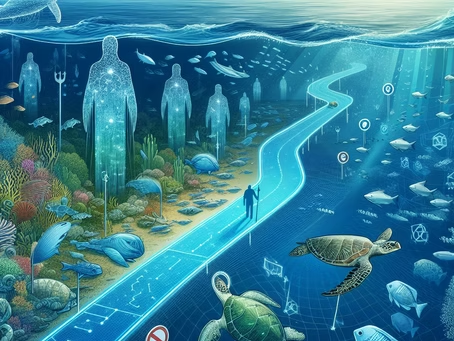Why Marine Migratory Routes Matter
The Role of Migration in Marine Ecosystems
Marine migratory routes are essential for the health of our oceans. These pathways allow species to move between feeding and breeding grounds, ensuring survival and continuity of life cycles. Migration also redistributes nutrients, enriching marine ecosystems and supporting diverse life forms.
Impact on Biodiversity
By connecting ecosystems across vast distances, migration promotes genetic diversity and resilience. Protecting these routes is therefore vital not only for individual species but for the balance of entire marine ecosystems.
Economic Importance
Healthy migratory routes sustain fisheries and marine tourism, providing livelihoods and food security for millions worldwide. Effective management of these routes helps ensure both ecological and economic sustainability.
Threats Facing Marine Migratory Species
Climate Change
Rising sea temperatures and acidification disrupt migration patterns and diminish food availability. Extreme weather events also damage essential habitats.
Pollution
Plastics and chemicals harm marine animals. Sea turtles often mistake plastic for food, while toxins accumulate in marine food chains, threatening reproduction and survival.
Human Activities
Overfishing depletes food sources, coastal development destroys habitats, and shipping traffic intersects migration routes, often resulting in collisions. Sustainable practices and protected areas are essential to mitigate these risks.
Success Stories in Marine Migration Protection
- Humpback whales: Once hunted to near extinction, they are rebounding thanks to whaling bans and marine protected areas.
- Sea turtles: Nesting site protection and bycatch reduction have boosted populations, with strong community involvement.
- Innovative projects: Satellite tracking and targeted policies in regions like Australia have strengthened conservation efforts.
Challenges in Protecting Marine Routes
International Cooperation
Migratory species cross national boundaries, requiring international agreements. Conflicting policies can hinder progress.
Enforcement of Protected Areas
Limited resources and lack of technology often prevent effective monitoring and enforcement within Marine Protected Areas (MPAs).
Balancing Conservation with Human Interests
Fisheries, tourism, and coastal development must be balanced with species protection. Solutions require collaboration and compromise.
The Role of Technology in Monitoring
- Satellite tracking: Provides real-time migration data and identifies critical habitats.
- Drones: Monitor species and detect illegal activities efficiently.
- Data analysis: AI and machine learning reveal patterns and guide conservation strategies.
Community Involvement in Conservation
Local Fishermen as Guardians
Fishermen, with their knowledge of the sea, can monitor routes and report illegal activities.
Educational Programs
Workshops, schools, and community initiatives raise awareness about the importance of protecting migration routes.
Citizen Science
Beach clean-ups, wildlife surveys, and data collection projects enable individuals to actively contribute to conservation.
Policy and Legislation
International agreements like the Convention on Migratory Species and UNCLOS foster cooperation across borders. National policies, such as the U.S. Marine Mammal Protection Act, demonstrate how strong legislation drives species recovery.
The Future of Marine Migratory Routes
Climate change may shift migration patterns, but new technologies and youth-led conservation initiatives offer hope. Biodegradable fishing gear, predictive AI, and community-led projects represent innovative solutions for the future.
The Importance of Marine Protected Areas
Well-designed MPAs reverse human impacts and preserve biodiversity. Success depends on careful planning, monitoring, and community involvement, with global examples proving their effectiveness.
The Connection Between Terrestrial and Marine Migration
Land-based pollution and development directly impact marine species. A holistic, cooperative approach linking terrestrial and marine conservation is critical for protecting migration routes.
Raising Awareness About Marine Migration
- Media campaigns: Spread awareness through documentaries, social media, and public messages.
- NGOs: Advocate for policies, fund research, and support conservation initiatives worldwide.
- Individual action: Reduce plastic use, support sustainable seafood, join clean-ups, and educate others.
Conclusion
Marine migratory routes are lifelines for countless species and essential to healthy oceans. Protecting them requires cooperation among governments, scientists, NGOs, and local communities. With innovation, education, and strong policies, we can ensure these vital journeys continue for generations to come.

